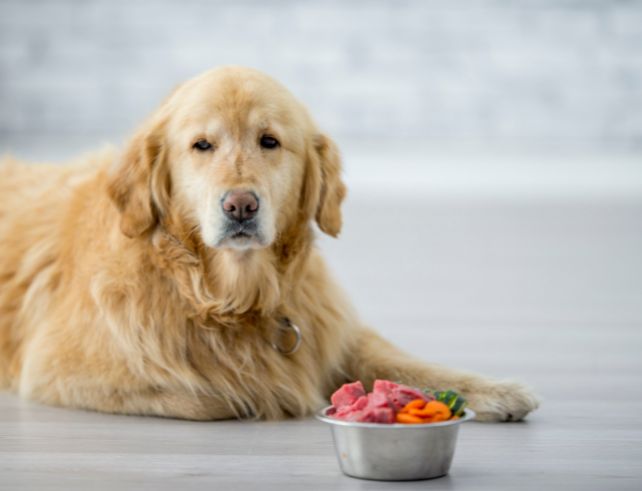As you finish your workday, the thought of getting home builds up the excitement. The sight of a wagging tail, happy eyes, and a warm purr add extra charm to your home. Here at Let’s Have Pet, we understand how much you love your pets and believe they deserve the best food. That’s why we’re talking about homemade pet food today.
As pet owners, we always want to make our pets’ lives better, and food plays a big role. There are so many types of pet food out there that it can be hard to pick the best one. But more and more, pet owners are choosing homemade pet food for its freshness and because they can control what goes into it. But how do you start making homemade pet food? Let’s learn together.
Why Homemade Pet Food?

The main reason to make your pet’s food at home is control. Store-bought pet food can sometimes contain stuff that’s not so good for your pet. But with homemade food, you know exactly what your pet is eating.
Plus, homemade pet food lets you make meals that fit your pet’s needs. Whether your pet has allergies, can’t eat certain foods, or simply likes some foods more than others, homemade meals can be tailored for them. And there’s nothing quite like seeing your pet enjoy a meal you’ve made with love.
Getting the Basics Right: Homemade Pet Food

But before you start cooking, keep in mind that what pets need to eat can be quite complex. Dogs and cats need a balanced diet that includes proteins, carbs, fats, vitamins, and minerals. So, it’s a good idea to talk to your vet or a pet nutrition expert before you change your pet’s diet too much. They can help you come up with a meal plan that fits your pet’s age, size, breed, and health.
Starting Out: Ingredients for Homemade Pet Food

The main part of a homemade pet meal is usually high-quality proteins like chicken, turkey, beef, or fish. But remember, protein alone is not enough. Dogs can also eat fruits and vegetables like carrots, green beans, and apples, which give them important vitamins and fiber. Cats, on the other hand, need a diet that’s mostly meat-based.
Whole grains like brown rice, oatmeal, or quinoa can give your pets the energy they need but don’t use too much. And make sure to avoid foods that are bad for pets like chocolate, onions, grapes, and some artificial sweeteners like xylitol.
Let’s Cook!

Once you have the right ingredients, it’s time to start cooking. Start with simple recipes, then try using different ingredients to keep your pet interested. But remember, the goal isn’t to make fancy food but to make healthy food. Cooking too much can get rid of the nutrients in the food, so try steaming or sautéing instead.
Supplements: Do You Need Them?

Homemade food can give your pet lots of nutrients, but it can be hard to get everything they need just from food. This is where supplements come in. Your pet might need a multivitamin, probiotic, or fish oil supplement, but always talk to your vet before adding any supplements to your pet’s diet.
Storing and Serving Homemade Pet Food

Just like our meals, you can make a lot of homemade pet food at once and save it for later. Make sure to keep it in airtight containers and put them in the fridge so the food doesn’t spoil. When you serve the food, make sure not to give your pet too much. Overeating can make pets overweight and cause other health problems, so follow the feeding guide your vet or nutritionist gives you.
Finally, remember that switching from store-bought food to homemade food should be a slow process. Start by mixing a little bit of the homemade food with the regular food, then slowly give them more homemade food and less store-bought food.
In the end, making homemade pet food takes some effort and planning, but it can be a great thing to do for your pet. With love and careful attention, you can become great at cooking for your furry friends. So, put on your apron, get ready to learn, and start cooking tasty, healthy meals for your pets. Happy cooking! Read others

